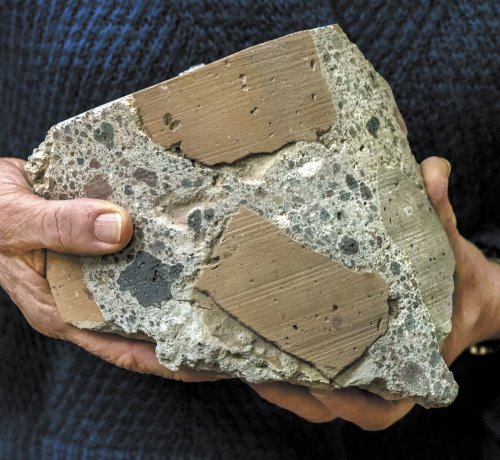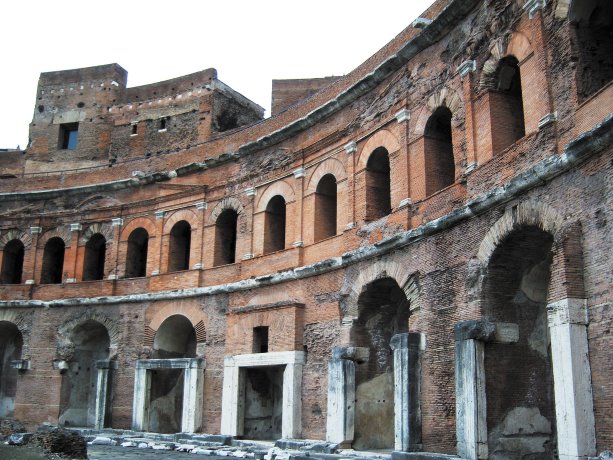The secrets of Roman concrete could pave the way for greener concrete, according to researchers who have created a recipe to replicate the mix as it was 1,900 years ago.
There’s still much work to be done but for years engineers and historians have marvelled at how Roman concrete works have stood the test of time for nearly two millennia, especially those poured during the imperial reign of Augustus Caesar (63 BC to AD 14).
Dr. Marie Jackson of the University of California, Berkeley, civil and environmental engineering department, is part of a team working to understand what makes Roman concrete so resilient both in terms of structures, building seawalls and other waterfront structures.
It turns out there is at least one magic component: volcanic ash from a nearby volcano where excavation at a specific location produced a type of granular material perfect for making concrete at lower temperatures.
This so-called Pozzolanic cement is named after the volcanic ash it derived from called the Pozzolane Rosse. This ash flowed and fell nearly half a million years ago around the Alban Hills volcano some 12 miles southeast of Rome.
It’s a simple recipe of volcanic ash and lime. While it takes longer to cure than modern day concrete, it has some valuable properties.
"The selection of the volcanic ash was a very good choice compared to other volcanoes around the area," she said noting it was clearly by design.
"Portland cement is made by burning rock at about 1,450 C whereas volcanic ash concrete (Roman concrete with lime) is burned at about 900 C, which results in far less energy being consumed and a far smaller carbon footprint."
The team went to Cornell University to recreate the mix specified by the architect Vitruvius (circa 15 BC to AD 80-70). They found it had remarkably different properties which gave it strength and longevity.
The mortar binding the aggregates is calcium-aluminum-silicate-hydrate (C-A-S-H) whereas in Portland cement it is calcium-silicate-hydrate (C-S-H). It’s the aluminum which seems to trigger crystallization of strätlingite and siliceous hydrogarnet (katoite).
Studying the crystallization microscopically, the team determined they formed at the interface of the aggregate and cement, which in Portland cement is often the weakest point of bonding.
However, the strätlingite crystals play an important role in preventing cracks from spreading, creating a form of self-healing concrete, she said.
"The crystals are an obstruction, so when cracks start to form they are blocked by the crystals, and in fact more crystals will grow in the cracks," she said.
The architect Vitruvius is credited with writing 10 seminal works on architecture. Among his writings a formula for the mix was found, though it was hard to decipher. The team used that information, microscopic analysis of core samples and an iterative process to come up with a working mix. They cast it and let it sit for six months before cracking it open for microscopic analysis.
The composition closely mirrored the sampling of concrete from the famed Trajan’s Market in Rome which had been the team’s main reference point. It’s billed as the world’s oldest shopping mall, built 100-110 AD, featuring a grand hall with a concrete vaulted roof.
What’s interesting, said Dr. Jackson, is that those concrete structures and vaulted ceilings were made without rebar or even fibres being added to the mix as they would today.
More pointedly, given the region’s history of earthquakes, the self healing properties seem to be perfectly planned to repair microcracks as they formed internally, preventing larger ones from developing and extending the life of the structures.
Dr. Jackson, who started her academic career as a volcanologist before shifting into civil engineering, is now taking her work further. She is examining samples of marine concrete built by the Romans which also seem to have longer than normal lifecycles despite exposure to seawater. Indeed, it appears seawater itself is the magic component in the mix.
"We’re also looking at volcanic ash in North America and seeing how it might be used," she said.
Future applications of the knowledge gleaned by the team could be used to reduce the amount of energy used in making concrete, which is currently substantial, and look at ways volcanic ash might be used to make high performance concrete.
Creating a better, greener concrete mix would be a wonderful end goal, Dr. Jackson said, but added a caution, noting there’s no magic wand with volcanic ash cement.
"We have to be realistic," she said.
"There’s a really important role for Portland cement concrete in modern construction and people are doing a lot to reduce the carbon footprint of the materials. I see the boom in concrete prototypes for specialty concrete and high performance purposes."
That said, however, she said demonstrating common volcanic ashes can be used in the same way the Romans did, perhaps with Portland systems or lime systems, that would be a huge step in building massive structures like seawalls or concrete infrastructures like dams.
"These Roman structures were massive so that’s where there would more reasonable application of this," she said adding there are many volcano sites in North America and an abundance of ash samples, though extraction and transportation of large quantities may make for logistical challenges.
In the meantime, the team is looking at drilling a relatively new volcanic site in Iceland to sample the ash materials for comparative purposes. Surtsey is a small island which erupted from 1963 to 1967, and it’s hoped an interdisciplinary research program will unearth a myriad of new data around micro organisms and geologies, including volcanic ash.
"What we’re talking about is natural concrete which is the earth’s crust itself," she said.




Recent Comments
comments for this post are closed